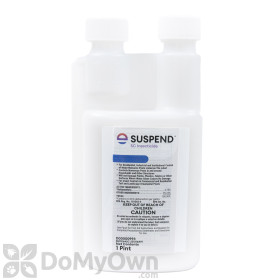How to Control Crickets
Effective cricket management includes a combination of both chemical and non-chemical methods.
Non-Chemical Methods for Cricket Control
Harborage Removal - Crickets most often make homes in cracks and crevices provided by large piles of clutter.
- Limit outdoor harborages by removing piles of leaves, firewood, or other items close to the structure. Also cut back heavy ground cover such as ivy.
- Remove indoor harborages by eliminating clutter in storage areas.
Exclusion - Limit entry points to keep crickets out.
- All doors should be fitted with tight-fitting weather-stripping.
- Other potential entry points should be screened or caulked (includes vents, window frames, plumbing and electrical entrances)
Moisture Elimination - House crickets and camel crickets especially like to breed in damp basements or crawlspaces.
- Install vapor barriers and additional foundation vents in crawlspaces as needed.
- Make a damp basement less welcoming to crickets with the use of a humidifier.
Outdoor Lighting - Most cricket species (including house, field, and ground) are readily attracted by exterior building lights and lit windows.
- Swap outdoor lights for yellow "bug light" bulbs or sodium vapor lamps which are less attractive to crickets and other insects
- In commercial settings, move outdoor lighting away from the building
Chemical (Pesticide) Methods for Cricket Control
Residual Perimeter Treatment - The first and most important chemical application you should make is to create a residual barrier around the perimeter of your home or building using one of the following liquid residual products. For easiest application, follow the mixing instructions on the product label and apply product using a 1-Gallon Sprayer along baseboards, around doorways, beneath stairways, in crawlspaces, underneath appliances, and other areas where crickets are found. Apply outdoors creating a 3-foot wide band of chemical along the structure foundation.
- Demon WP Insecticide (Ground, House, and Field Crickets)
- Suspend SC (Ground, House, and Field Crickets)
- Talstar P (Mole Crickets)
Crack & Crevice Treatment - Treat wall voids, crawlspaces, and other cracks and crevices where crickets reside with a Hand Duster and Delta Dust Insecticide. The dust is easily puffed underneath baseboards for an added barrier of protection. Delta Dust remains effective up to 8 months.
Outdoor Granular Treatment - Applying a band of granular pesticides around the outside perimeter of the home can help keep crickets out. Granulars may also be applied as a broadcast application in grass and mulch for mole cricket control. Indoors, spread granulars in basements, attics, or crawlspaces.
- NiBan Granular Bait - apply in 2-foot wide band around the outside of a structure for control of crickets
- Talstar PL Granules - apply in late April to early May for optimum seasonal control of mole crickets
Contact Treatment - Non-residual contact sprays are great for spot treatments of indoor pests when they interfere with daily living. Just grab a contact aerosol and get rid of annoying crickets on the spot. Contact sprays for crickets include D-Force and CB-80 Extra.
Trapping - Trapper LTD Mouse/Insect Glue Boards are sticky traps that can be placed in corners, along walls where pests travel, and on both sides of doors where crickets and other pests crawl in under weather-stripping. Sticky traps are only a small part of control and will not eliminate an infestation, but can greatly reduce populations when used when smartly placed.
If you've spotted crickets around your home, read more about how to identify crickets and check out our line of cricket control products.











